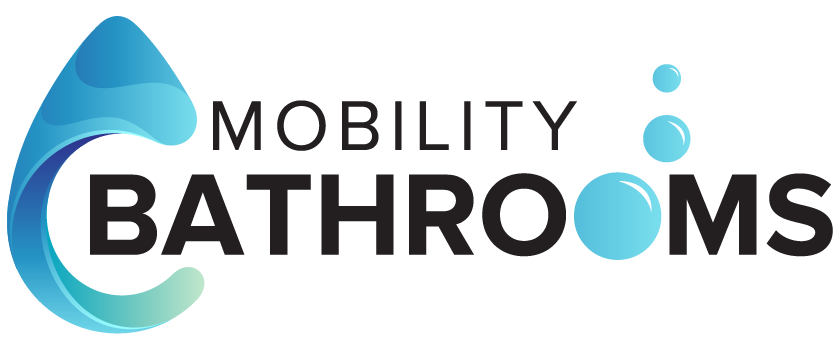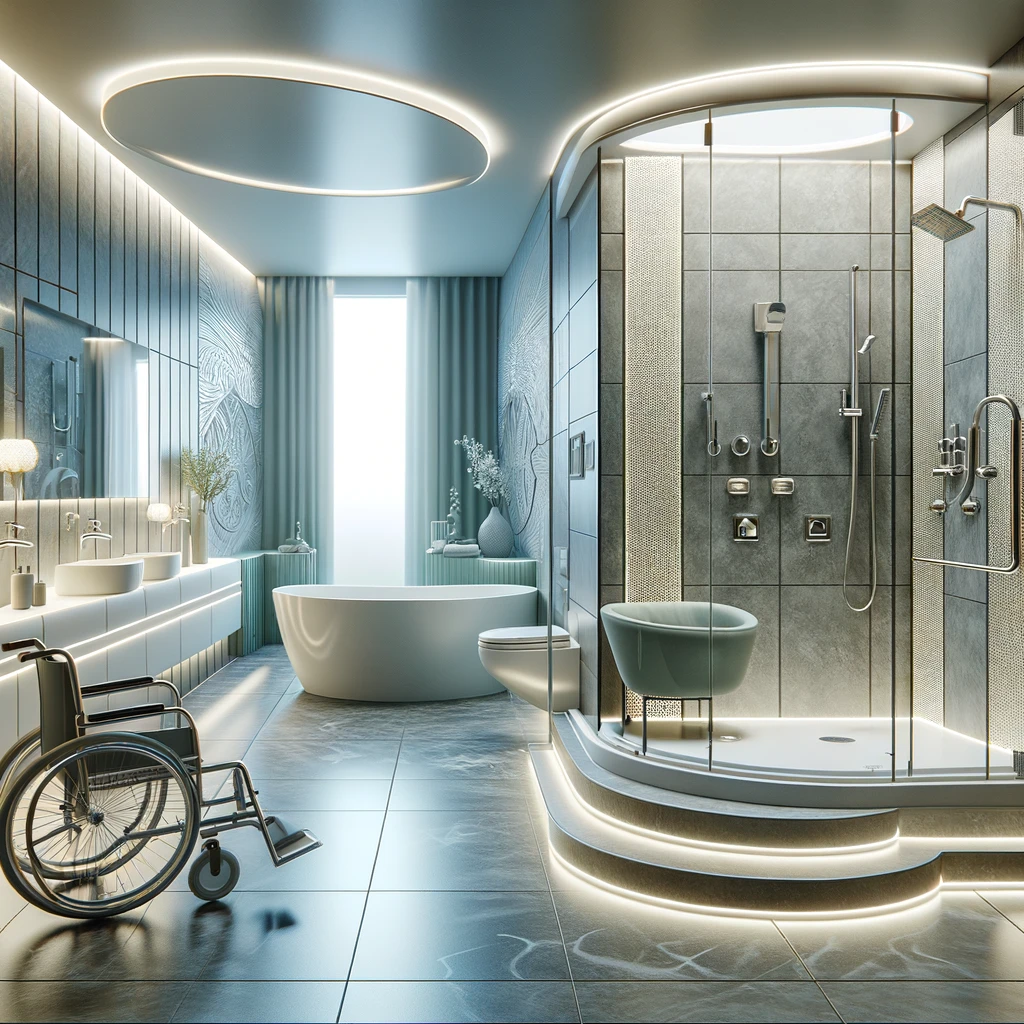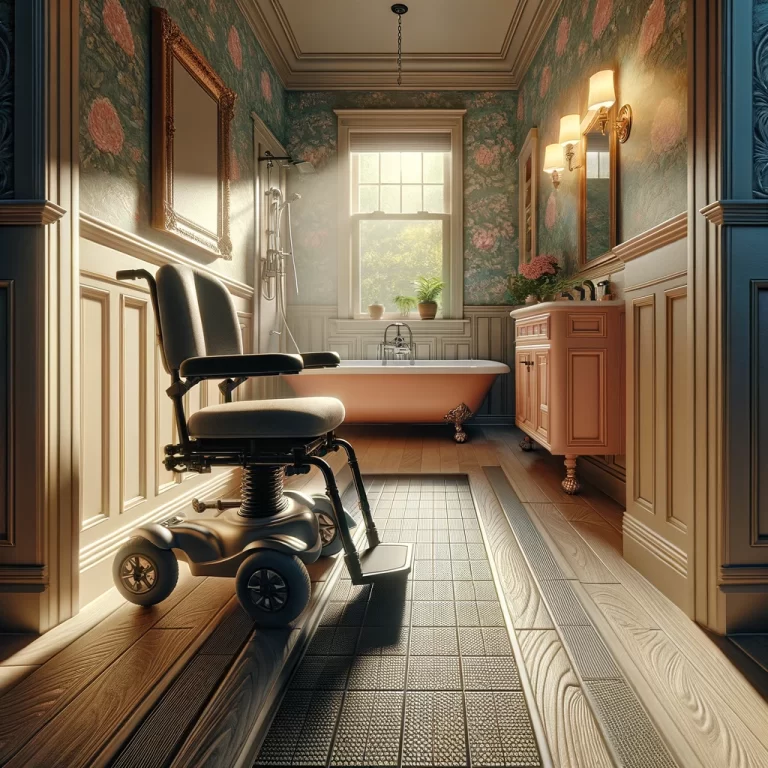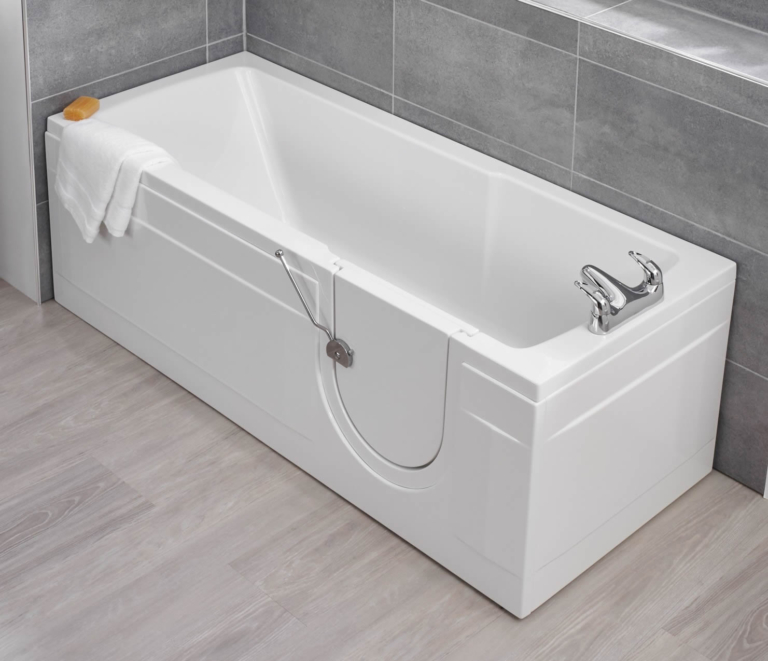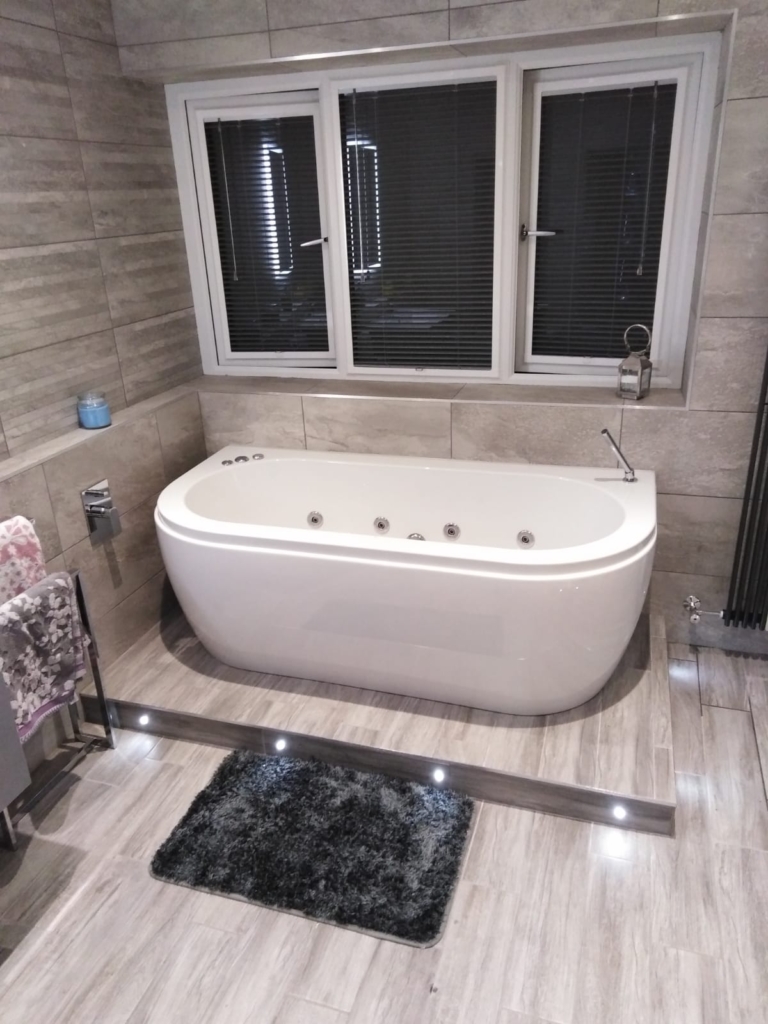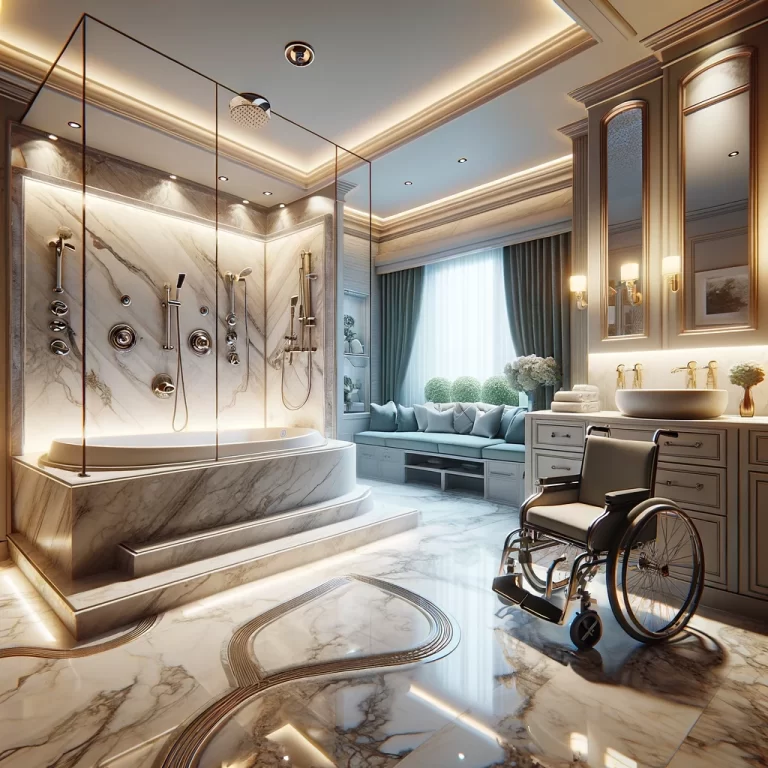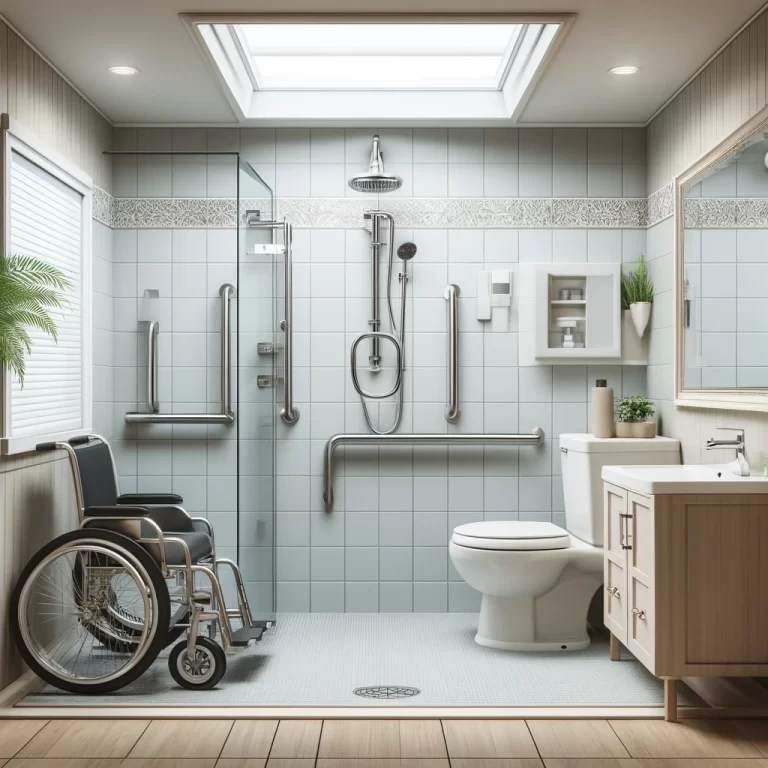How do handicap people use the bathroom
Are you looking to make your bathroom more accessible for disabled individuals but unsure where to start?
In this comprehensive guide, we will explore the requirements for a disabled accessible bathroom, including ADA standards, dimensions, grab bars, and more.
We will also discuss the different types of disabled bathrooms, such as wheelchair accessible bathrooms and walk-in showers.
We will provide tips on making your bathroom more user-friendly for those with disabilities.
Let’s dive in and learn how to create a more inclusive and accessible space for everyone.
What Are the Requirements for a Handicap Accessible Bathroom?
Creating a disabled accessible bathroom involves adhering to specific requirements and standards to ensure the safety and comfort of individuals with mobility challenges.
- One of the crucial aspects to consider in designing such a bathroom is the installation of grab rails at strategic locations to provide support and stability for people with mobility limitations. These grab rails should be sturdy, properly mounted to support the weight of individuals, and follow ADA guidelines for height and placement.
Incorporating support rails near toilets and showers can greatly enhance accessibility by offering extra support for those who may need assistance with standing or balance. Ensuring that the floor space is wide enough to accommodate a wheelchair, maintaining slip-resistant flooring, and installing accessible taps and handles are also essential components of a well-designed disabled accessible bathroom.
ADA Standards for Accessible Design
ADA standards for accessible design outline specific guidelines and regulations that must be followed to ensure the accessibility and usability of spaces for individuals with disabilities.
These standards cover a range of aspects in accessible bathroom design, including dimensions, layouts, and fixtures. For instance, the ADA mandates that a clear floor space of at least 30 inches in width should be provided to allow for wheelchair manoeuvrability. Countertops and sinks should be at a suitable height to accommodate users in wheelchairs comfortably.
Grab bars must be securely installed in areas such as showers and toilet stalls to facilitate safe transfer and movement. The design should consider colour contrast to aid visually impaired individuals in navigating the space effectively.
Dimensions and Layouts
The dimensions and layouts of a disabled accessible bathroom play a crucial role in ensuring sufficient space for manoeuvrability and ease of use for wheelchair users and individuals with mobility impairments.
One key element to consider in the layout is the placement of grab rails. These provide essential support and stability for individuals when moving around or transferring from a wheelchair. Incorporating a transfer board into the design can greatly facilitate seamless transfers between the wheelchair and other bathroom fixtures.
Investing in a wheelchair-accessible toilet can significantly enhance accessibility. These toilets are higher than traditional ones, making it easier for individuals to transfer on and off them comfortably. The clearance area around the toilet is also crucial to ensure sufficient space for manoeuvring the wheelchair.
Grab Bars and Handrails
Grab rails and handrails are essential components of a handicap accessible bathroom, providing stability and support for wheelchair users and individuals with limited mobility.
Toilet Height and Seat
The toilet height and seat design are critical considerations in a handicap accessible bathroom, with raised-height toilets and supportive seats offering improved comfort and ease of use for individuals with mobility limitations.
For wheelchair users and individuals with mobility impairments, a raised-height toilet can significantly reduce strain on joints and muscles, making it easier to sit down and stand up independently. The higher seat also promotes better posture and reduces the risk of falls, enhancing overall safety in the bathroom environment. Supportive seating options, such as armrests or padded seats, provide additional stability and assistance during transfers, further enhancing the overall accessibility and user experience. When choosing the right toilet height and seat configuration, always prioritize the comfort and independence of the user.
Sink and Tap Accessibility
Ensuring sink and tap accessibility in a disabled accessible bathroom involves selecting fittings and designs that are user-friendly and convenient for individuals with mobility challenges.
One key consideration is opting for lever handles on both the sink and tap, as they are easier to operate than traditional knobs. These handles require minimal effort to turn on and adjust water flow, making them ideal for individuals with limited dexterity. Choosing fittings with adjustable heights can accommodate varying needs and ensure comfort for users of different heights. Incorporating motion-sensor taps can also be beneficial, as they eliminate the need for manual operation, providing a hands-free experience for improved hygiene and ease of use.
What Are the Different Types of Handicap Bathrooms?
Accessible bathrooms come in various types to cater to the diverse needs of individuals with mobility challenges, ranging from wheelchair accessible setups to innovative walk-in showers and baths with doors.
- Wheelchair accessible bathrooms are equipped with wider entrances, grab rails, and lower basins to accommodate individuals who use wheelchairs. These designs focus on providing ample space for manoeuvrability and ensuring ease of access to essential facilities.
- Walk-in showers offer step-free entry, making them ideal for individuals with limited mobility or those who find it difficult to step over a traditional shower kerb. Transfer showers include benches or seats for added comfort and safety during bathing.
- Baths with doors allow for easy entry and exit, reducing the risk of slips and falls in the bathroom.
Wheelchair Accessible Bathrooms
Wheelchair accessible bathrooms are specially designed spaces that accommodate the needs of individuals using mobility aids such as wheelchairs, ensuring ease of access and movement within the bathroom environment.
One of the key features of wheelchair accessible bathrooms is the presence of grab rails strategically placed to provide stability and support for individuals transferring to and from wheelchairs. These grab rails are typically located near toilets, sinks, and showers, allowing users to move around with confidence.
Additionally, transfer boards are often incorporated to assist in transferring from wheelchairs to toilet seats or shower benches, promoting independence and safety. Raised-height toilets are another essential element in these bathrooms, making it easier for wheelchair users to sit and stand comfortably.
Walk-in Showers
Walk-in showers offer a convenient and accessible bathing solution for individuals with mobility limitations, providing a safe and barrier-free showering experience in a handicap accessible bathroom.
One of the key benefits of walk-in showers is their anti-slip mats, which significantly reduce the risk of falls and accidents, especially for users with limited mobility. Incorporating emergency pull cords within easy reach ensures quick assistance if needed. The availability of various seating options like built-in benches or fold-down seats not only improves comfort but also allows individuals to shower with stability and support. Design considerations focus on creating a spacious layout that accommodates mobility aids such as wheelchairs or walkers, promoting independence and confidence.
Transfer Showers
Transfer showers are designed to facilitate seamless transitions for individuals with mobility challenges, featuring grab rails, assistance poles, and transfer boards to ensure safe and efficient showering in a handicap accessible bathroom.
Grab rails are crucial components of transfer showers, strategically placed to provide stability and support during transfers in and out of the shower. These rails are often installed at varying heights to accommodate different users’ needs. Similarly, assistance poles offer additional support, helping withdividuals with balance and stability while moving within the shower area.
Transfer boards are commonly used in transfer showers to help individuals move from a wheelchair or other mobility aid onto the shower seat safely. These boards bridge the gap between surfaces, making the transition smoother and reducing the risk of slips or falls.
Tubs with Doors
Tubs with doors offer a practical and user-friendly bathing solution for individuals with mobility impairments, allowing easy access and safe entry into the bath area within a handicap accessible bathroom.
The tubs with doors are designed with a wide opening that facilitates effortless entry for those with limited mobility. The ergonomic handles on these tub doors ensure a secure grip, adding an extra layer of safety for the users. The watertight seal around the door prevents leaks and keeps water contained during bathing, minimising the risk of slips and falls.

How Do Handicap People Use the Bathroom?
Individuals with mobility challenges utilise various aids and solutions to navigate and use the bathroom effectively, including grab bars, raised toilet seats, shower chairs, and bidet systems tailored for accessibility.
- Grab bars play a crucial role in providing stability and support for individuals with mobility impairments, offering a secure grip while moving around the bathroom. These bars are strategically placed near toilets, showers, and bathtubs to aid in safe transfers and movement.
- Raised toilet seats are another essential tool that assists in making the bathroom experience more comfortable and manageable. By increasing the height of the toilet, they reduce the strain on joints and muscles during sitting and standing.
- For a more innovative approach, toileting solutions like Pants Up Easy offer unique devices that aid in dressing and undressing, making the process easier for individuals with limited mobility.
- Bidet systems add an extra layer of comfort and independence to personal hygiene routines. These systems provide thorough cleansing and are especially beneficial for those with mobility challenges.
Using Grab Bars and Handrails
Grab rails and handrails are essential aids that enable individuals with mobility challenges to maintain balance, stability, and support while using the bathroom facilities independently.
These essential bathroom fittings come in various shapes, sizes, and materials to cater to different needs and preferences. Whether it’s installing a grab rail near the toilet for support during transfers or mounting handrails in the shower to prevent slips and falls, these assistive devices play a crucial role in enhancing safety, mobility, and confidence for individuals with mobility impairments.
Proper installation is key to ensuring the effectiveness of grab rails and handrails. They should be securely mounted on sturdy walls or studs to bear weight and provide reliable support. Regular maintenance and checks are recommended to verify their stability and functionality.
Using a Raised Toilet Seat
A raised toilet seat provides added convenience and comfort for individuals with mobility limitations, ensuring easier transitions onto and off the toilet while minimising strain and promoting independence.
One of the major advantages of utilising a raised toilet seat is its ability to adapt standard toilet height to better suit the needs of the user. This customisation can significantly enhance accessibility and reduce the risk of falls or accidents, especially for those with limited mobility. The raised seat design promotes proper posture and alignment, making it easier for individuals to maintain stability while using the toilet.
Using a Shower Chair
A shower chair serves as a practical and supportive tool for individuals with mobility difficulties, offering a stable seating option during showering to ensure safety, comfort, and ease of use.
These specialised chairs are designed with features such as non-slip feet and adjustable heights to cater to various needs, making them highly adaptable in handicap accessible bathrooms. They are often compatible with bathing cushions or shower seats, adding extra support and allowing for customised comfort.
The advantages of shower chairs extend beyond mere convenience; they can significantly enhance the bathing experience for individuals requiring seated shower solutions. By providing a secure spot to sit, these chairs promote independence and confidence in daily hygiene routines, fostering a sense of self-sufficiency and well-being.
Using a Bidet
A bidet offers a hygienic and efficient solution for individuals with mobility challenges, providing customisable cleaning options and enhanced personal care in a handicap accessible bathroom.
One of the key features of bidets is the automatic bidet wash function, which allows for hands-free and thorough cleansing, especially beneficial for those with limited mobility. Users can easily adjust the water temperature, pressure, and nozzle position to their preference, ensuring a comfortable and personalised experience.
Bidets reduce the need for excessive toilet paper usage, promoting sustainability and environmental friendliness. They also help in preventing skin irritation and infections, contributing to improved overall hygiene practices.
What Are Some Tips for Making a Bathroom More Accessible?
Enhancing bathroom accessibility involves implementing practical tips and modifications such as using non-slip flooring, handheld showerheads, shower benches, and colour contrast elements to improve safety and usability.
- Non-slip flooring is crucial in preventing falls, providing stability when walking on wet surfaces.
- Handheld showerheads offer flexibility for individuals with varying mobility needs, allowing them to adjust the water flow and direction easily.
- Shower benches ensure comfort and support during showering for those who need to sit.
- Incorporating colour contrast elements not only adds a decorative touch but also aids individuals with visual impairments in navigating the space effectively.
Installing Non-slip Flooring
Non-slip flooring is a crucial addition to an accessible bathroom, offering traction and stability to prevent slips and falls, especially for individuals with mobility limitations or balance issues.
One key element in creating a safe and functional accessible bathroom is the use of slip-resistant mats strategically placed in critical areas like the shower and near the toilet. These mats provide an extra layer of grip, reducing the chances of sliding on wet surfaces. Opting for flooring materials with textured surfaces can significantly improve traction. It is also important to ensure that any rugs or carpets in the bathroom are secured with non-slip pads to prevent accidental movement.
Using Handheld Showerheads
Handheld showerheads offer flexibility and convenience for individuals with mobility challenges, allowing adjustable positioning and targeted water flow during bathing in an accessible shower or bath setup.
One of the key benefits of handheld showerheads in accessible bathrooms is their versatility to cater to different user needs. Whether installed at a fixed height or utilising a sliding bar for adjustable positioning, these showerheads can accommodate various users, including those who require seated bathing with aids like shower chairs or benches. This adaptability ensures that individuals with diverse physical abilities can comfortably and safely use the shower, promoting independence and confidence in their daily bathing routine.
Adding a Shower Bench
A shower bench serves as a practical seating solution in an accessible bathroom, offering stability, comfort, and support for individuals who require seated bathing options or assistance during showering.
One of the key benefits of incorporating a shower bench is the enhanced safety it provides. By offering a stable seating arrangement, it reduces the risk of slips and falls, especially for individuals with limited mobility. The bench also promotes independence and confidence during bathing routines, ensuring a more comfortable experience.
Shower benches are designed to be compatible with various mobility aids such as shower chairs, making it easier for individuals to transition between sitting and standing positions. This adaptability caters to the diverse needs of users and contributes to a more inclusive bathroom environment.
Using Colour Contrast for Visual Impairment
Colour contrast plays a significant role in enhancing the accessibility of bathrooms for individuals with visual impairments, offering clear distinctions between fixtures, switches, and elements for improved navigation and usability.
Consider the strategic placement of high contrast taps throughout the bathroom to help differentiate between hot and cold water, enhancing safety and ease of use. Incorporating high contrast light switches makes it easier for individuals with visual impairments to locate and operate them effectively. By utilising visual aids with prominent colour differences, such as grab bars or toilet seats, individuals can confidently navigate and utilise bathroom facilities independently, promoting a sense of autonomy and comfort in their daily routines.
Frequently Asked Questions
How do handicap people use the bathroom?
Handicap individuals may require special accommodations in the bathroom to assist with their mobility and independence.
What are some common modifications in a handicap accessible bathroom?
Some common modifications include grab bars, raised toilet seats, and roll-in showers with built-in shower seats.
Is there a specific layout for a handicap accessible bathroom?
Yes, a handicap accessible bathroom should have enough space for a wheelchair to maneuver, and the sink, toilet, and shower should be placed at a lower height for easier reach.
Are there any specific toilet options for handicap individuals?
Yes, there are raised toilet seats and toilets with built-in support rails that can make it easier for handicap individuals to use the bathroom.
What is a transfer bench and how is it used in a handicap accessible bathroom?
A transfer bench is a seat that extends over the bathtub or shower, allowing handicap individuals to sit down and slide over into the tub or shower safely.
Do all public restrooms have handicap accessible facilities?
Yes, according to the Americans with Disabilities Act (ADA), all public restrooms are required to have handicap accessible facilities, including grab bars and wider stalls.
